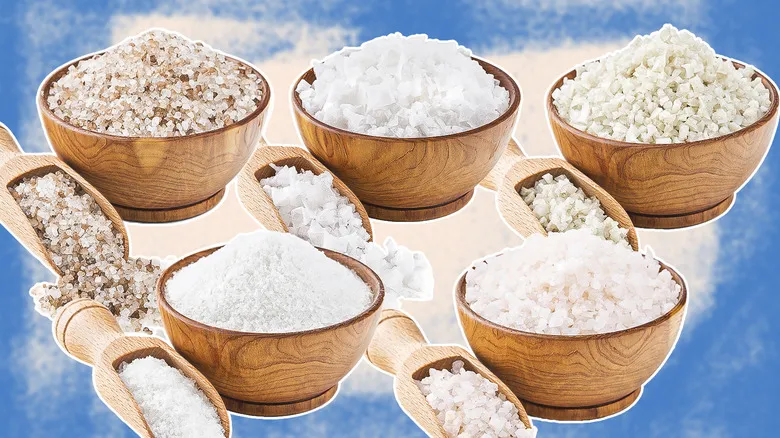Fleur de sel
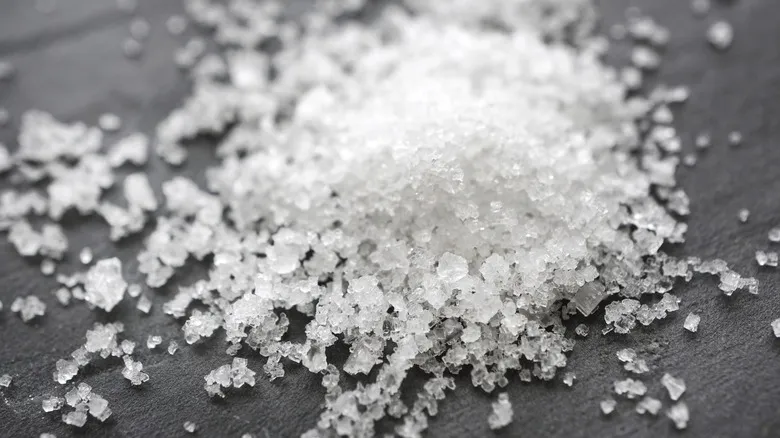
Fleur de sel, meaning "flower of salt," is among the most esteemed salts in the culinary realm. Often dubbed the "caviar of salts," it is celebrated for its delicate texture and subtle, pure flavor. This exquisite salt is sourced from the Atlantic coast of France, where it is hand-harvested using a traditional artisanal technique that has been passed down through generations. Fine, flaky crystals form on the surface of salt ponds and are meticulously skimmed off before they sink, ensuring their exceptional quality. This labor-intensive process elevates fleur de sel to a premium finishing salt, cherished for its flavor and craftsmanship.
What distinguishes fleur de sel from other salts is its moisture content and intricate flavor profile. It boasts a mineral-rich taste with a briny, slightly sweet nuance, adding complexity to dishes that goes beyond mere saltiness. The moist, irregular crystals of fleur de sel tend to cluster together, creating small groups that release bursts of intense flavor when sprinkled over food. This unique texture provides an elegant crunch that can significantly enhance the dining experience.
Due to its delicate nature, fleur de sel is not ideal for cooking, as it clumps and dissolves quickly when exposed to heat. Instead, it excels as a finishing salt, perfect for adding a sprinkle over roasted vegetables, grilled meats, or even sweet delights like chocolate or caramel. Chef Lior Lev Sercarz describes fleur de sel as "the perfect salt for salad dressings or finishing a dish." Its refined flavor and texture make it an essential addition to any home chef's kitchen.
Fine sea salt
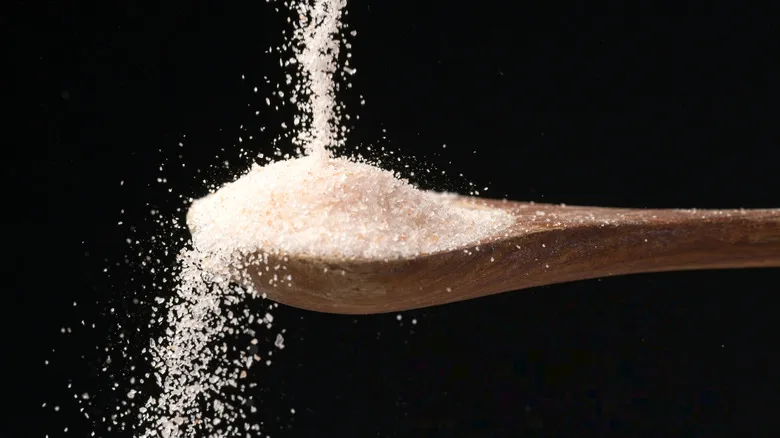
Due to its remarkable versatility, fine sea salt is a must-have in any kitchen. It dissolves rapidly, making it ideal for seasoning during cooking or for a final sprinkle on dishes. Chef Lior Lev Sercarz states, "If you had to choose just one salt, this would be it." It’s a versatile ingredient that works well with everything from soups and stews to meats and baked goods.
Jess Lea-Wilson, co-author of "Sea Salt: A Perfectly Seasoned Cookbook," notes, "Fine sea salt spreads more uniformly throughout the ingredients in a dish, enhancing their flavors and creating a more harmonious taste." This even distribution is largely due to its fine grain. Its subtle flavor also makes it an excellent choice for delicate dishes like fish, where a strong saltiness could overwhelm the dish.
Lea-Wilson further emphasizes that the purity of fine sea salt is one of its significant benefits. "Some table salts contain additives that can account for up to 2% of their weight, including aluminum and silicon dioxide, which are used in glass and ceramic production. This may explain the 'tinny' taste of table salts," she explains. In contrast, fine sea salt is pure and devoid of these additives, making it a superior choice for everyday cooking.
Grey salt
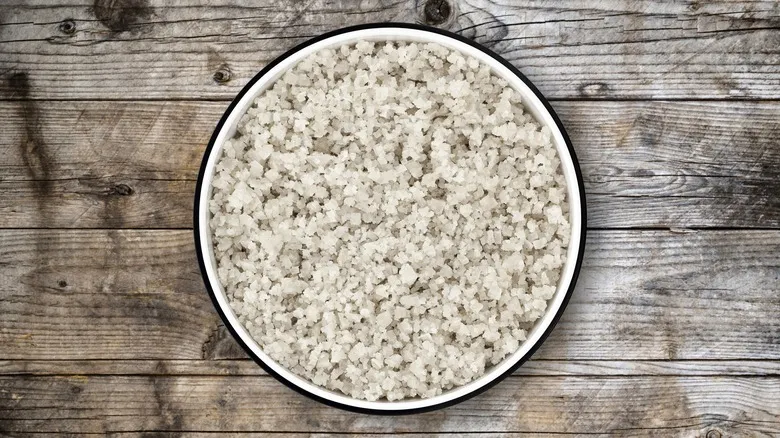
Grey salt, often referred to as Celtic Sea salt, boasts a rich, earthy flavor that distinguishes it from other sea salts. Sourced from the clay-lined salt ponds of France and a few other locations, its characteristic grey color is derived from the minerals found in the surrounding environment. This distinctive harvesting method, which involves minimal processing, enables grey salt to preserve essential trace minerals that enhance its complex flavor profile.
In contrast to finely processed table salt, grey salt has a coarser texture that is rough and slightly moist, making it easy to pinch and apply for precise seasoning. Chef Lior Lev Sercarz describes grey salt as "an excellent all-purpose salt for cooking and blanching pasta, as well as for roasting," highlighting its versatility in the kitchen for cooks of all skill levels. He further emphasizes its value by stating, "A fine grey sea salt is the most adaptable salt available. It can be used for both cooking and finishing, and it is quite affordable." If this doesn't persuade you to include grey salt in your kitchen, we’re not sure what will.
With its bold yet subtle flavor, grey salt elevates both simple and gourmet dishes, making it an essential ingredient for anyone aiming to enhance their culinary creations. It complements a wide range of dishes, from seasoned salmon to salted caramels.
Smoked salt

When you want to introduce a hint of smokiness without lighting up the grill, smoked salt is an excellent option. Typically made by smoking sea salt over various wood chips like hickory, mesquite, or applewood, this seasoning adds a rich, savory flavor that elevates a wide range of culinary creations. Each wood type brings its own distinct profile: hickory delivers a strong, bold taste; mesquite offers a deep, earthy essence; and applewood lends a sweeter, gentler flavor. Chef Lior Lev Sercarz refers to it as "an excellent salt for roasting and finishing," emphasizing its capacity to add a smoky richness to ingredients that aren't grilled.
Jess Lea-Wilson highlights its adaptability, stating that "smoked sea salt is particularly delightful with grilled or barbecued meats, fish, and vegetables, creamy mashed potatoes, roasted savory seeds for snacking, caramel desserts, and chocolate chip cookies." This wide range of uses illustrates how smoked salt can enhance both savory and sweet dishes, making it an essential ingredient for anyone seeking rich, smoky flavors without the effort of slow roasting or grilling.
Lea-Wilson adds, "we always keep smoked sea salt on hand to finish our dishes," underscoring its role as a convenient yet powerful ingredient. Its ability to elevate even the simplest meals into something remarkable makes smoked salt a staple in many kitchens.
Citrus salt
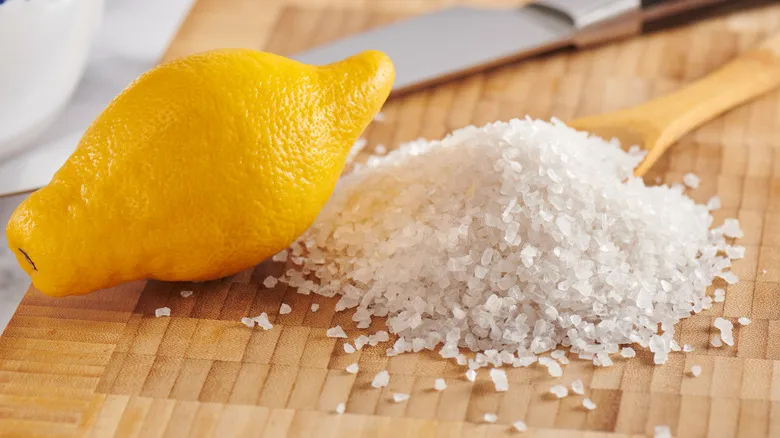
Distinctive seasonings have the power to elevate ordinary meals into something remarkable, often with just a few shakes. Citrus salt is a standout addition to any spice collection, imparting a bright and tangy flavor that enhances a variety of dishes. Chef Lior Lev Sercarz emphasizes its versatility, stating that it is excellent "for both cooking and finishing," making it a must-have seasoning. The lively acidity and aromatic citrus notes can effortlessly bring a vibrant, zesty flair to your culinary creations. As Sercarz explains, "Salt blends, like citrus salts, help to highlight or enhance the flavors in a dish," making them a fantastic option for enriching the overall taste experience. This is particularly advantageous for simple recipes that need a touch of brightness, such as a baked potato or plain white rice.
Jess Lea-Wilson notes that flavored salts, including citrus varieties, "pair exceptionally well with lightly flavored foods, such as eggs, white meat, and fish that hasn't been heavily marinated." This adds a hint of flavor while allowing the natural aromas to shine through. Citrus salt can also be easily integrated into dressings, marinades, or sprinkled over fresh or steamed vegetables for a vibrant finishing touch. Additionally, it can be creatively used for rimming cocktail glasses or lightly dusted over desserts like ice cream or brownies, providing an unexpected and delightful twist.
Kosher salt

Kosher salt has become a fundamental ingredient in both professional kitchens and home cooking spaces, valued for its adaptability and distinct qualities. Naomi Duguid, the author of "The Miracle of Salt," notes, "It's flat and thin because it's designed for drawing the blood out of meat." This unique texture makes it suitable for a wide range of culinary uses. Chef Lior Lev Sercarz points out another benefit: "The smaller or finer the salt, the more it will penetrate." This characteristic enables kosher salt to effectively extract moisture from ingredients, enhancing flavors and textures, which contributes to its widespread use in both cooking and baking.
One of the main reasons chefs keep kosher salt on hand is its user-friendly nature. "When you take a pinch of it — to season soup at the end or to make adjustments — it doesn't cling to your fingers," Duguid explains. This feature allows for precise seasoning, giving you better control over the flavors in your dishes. Moreover, the coarse texture of kosher salt is ideal for seasoning meat, ensuring an even distribution of flavor during cooking.
For both home cooks and professional chefs, kosher salt provides reliability, versatility, and ease of use. Whether you're seasoning a steak, finishing a soup, or adding a final flourish to a gourmet dish, kosher salt is an indispensable ingredient that consistently yields outstanding results. Keep it stocked in your pantry, and you'll always have a dependable seasoning for your culinary endeavors.
Colored salts
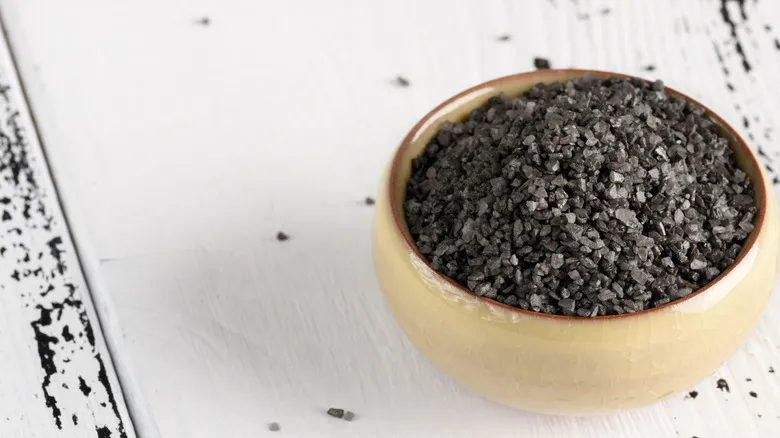
Colored salts offer a stunning visual appeal that can elevate the presentation of your culinary creations. Chef Naomi Duguid describes them as "a beautiful addition to sprinkle on," highlighting their function as eye-catching garnishes that infuse any meal with vibrant color. Some colored salts are infused with natural elements like blueberry or spruce tip, providing vivid shades that can elevate a simple dish into a culinary work of art. Other colorful options include Himalayan pink salt, which gets its hue from natural minerals, particularly iron oxide, present in the salt deposits. Likewise, black lava salt owes its striking dark color to activated charcoal, creating a bold contrast with various ingredients.
While these salts may add subtle flavors, their main appeal lies in their ability to enhance the visual charm of food. Duguid remarks, "it serves the purpose of a little seasoning and may add some flavor too. But it's also beautiful. It's a fleeting beauty." They can be used to enhance the visual interest of dishes such as salads, fish, or even desserts. Overall, they provide a fun way to experiment with aesthetics in cooking.
The next time you host a dinner party, consider using colored salts to transform your dishes into eye-catching masterpieces. This is a guaranteed way to leave your guests raving about the food long after the meal is over.
Blackthorn salt
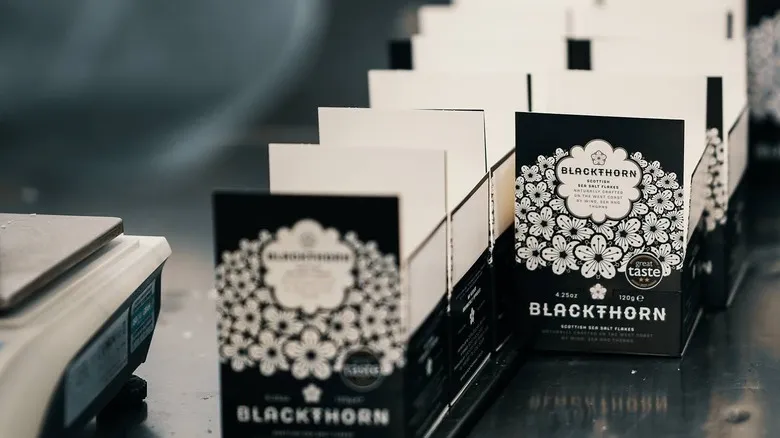
Blackthorn salt is a hidden treasure in the culinary realm, crafted near Glasgow, Scotland, through a distinctive method that distinguishes it from other salts. This premium sea salt is created by filtering seawater through blackthorn branches, a technique that imparts a subtle, woody flavor and a rich mineral composition to the salt. Chef Naomi Duguid had the opportunity to tour the Blackthorn facility and describes the process: "The saltwater is pumped to the top and trickles down through the prickly branches, then it's pumped back up again. Over five days, with the wind flowing through the structure, the water evaporates as it descends, resulting in a thick, salty brine." This artisanal approach reflects the dedication and skill involved in producing this exceptional product.
What truly sets Blackthorn salt apart is the distinctive flavor it brings to dishes. The filtering process lends it a natural, earthy undertone, adding a subtle complexity to anything it graces. This makes it an excellent choice for elevating your culinary creations with a touch of gourmet flair. Whether you're hosting an elegant dinner or simply experimenting in your kitchen, Blackthorn salt can serve as your secret ingredient. It offers more than mere saltiness; it enriches your dishes with a story, allowing you to share something unique and remarkable with your guests.
Flaky sea salt
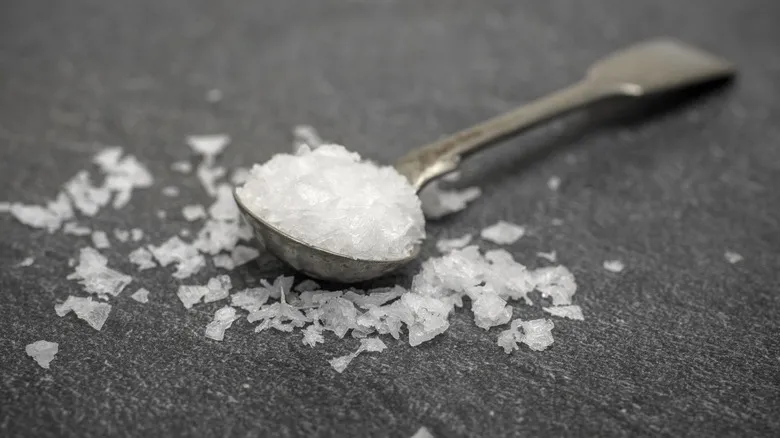
Flaky sea salt is one of the most adaptable finishing touches you can find in any kitchen. It’s not just about adding saltiness; it’s also about texture, crunch, and elevating every bite. Jess Lea-Wilson notes, "Sprinkling flaky salt on food just before serving creates a delightful crackle and a burst of saltiness that enhances both savory and sweet dishes." This explosion of flavor, combined with the satisfying crunch of the delicate flakes, can elevate even the simplest meals to something remarkable.
To truly appreciate the difference, try experimenting with something straightforward, like raw tomatoes. As Lea-Wilson recommends, "Take three slices of raw tomato: one without seasoning, one generously sprinkled with fine salt, and one with a touch of flaky salt." During your taste test, you’ll discover that the flaky salt not only seasons but also provides a crunchy burst that makes fresh produce come alive.
However, the allure of flaky sea salt extends beyond the first bite. Lea-Wilson emphasizes that flaky salt excels in boldly flavored dishes, such as steaks or chocolate brownies, where the larger flakes contribute depth and contrast. The texture of the salt itself adds another layer to the dish, transforming the dining experience from merely good to truly unforgettable. In short, if you haven’t yet finished a dish with flaky salt, you’re missing out on a transformative element in your culinary repertoire.
Celery salt

Celery salt might not be the first seasoning that springs to mind when considering ways to enhance your meals, but it certainly deserves a place in your kitchen. This often-neglected ingredient, created by mixing ground celery seeds with salt, can elevate a wide range of dishes with its subtly peppery and herbal notes. As Chef Jess Lea-Wilson highlights, "Celery salt, for instance, really enhances the experience of a Bloody Mary." However, its uses extend far beyond cocktails — this adaptable seasoning can enrich the flavors of soups, salads, and roasted vegetables as well.
The true appeal of celery salt lies in its capacity to impart a savory depth that transforms a dish without overwhelming it. It’s a nuanced ingredient that enhances the flavors of whatever it accompanies. Whether you’re stirring it into a simmering tomato soup, incorporating it into your burger patties, or sprinkling it as a finishing touch on fries or salads, celery salt serves as a secret weapon that encourages culinary creativity. Instead of relying on the usual seasonings, why not try celery salt to delight your palate? It’s that surprising element that can elevate a meal from mundane to truly unforgettable.
Recommended

Give Chicken Salad A Kick Of Heat With One Spicy Ingredient

11 Ways To Use A Potato Masher Other Than For Spuds

The Biggest Mistake You're Making With Leftover Salmon

Hot Dogs Belong In Your Grilled Cheese
Next up

